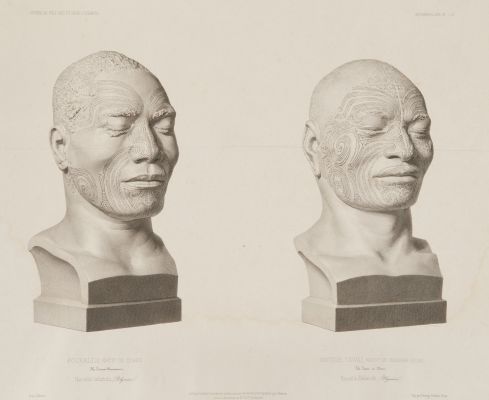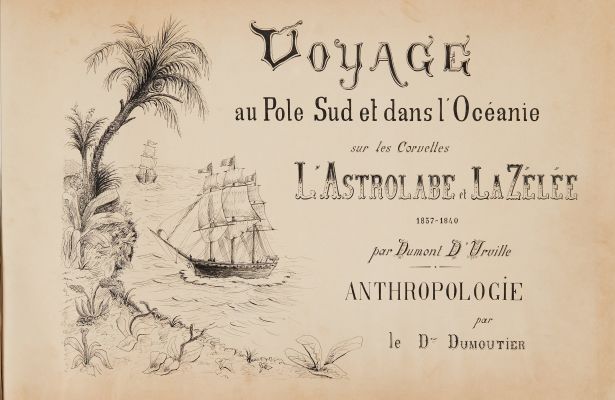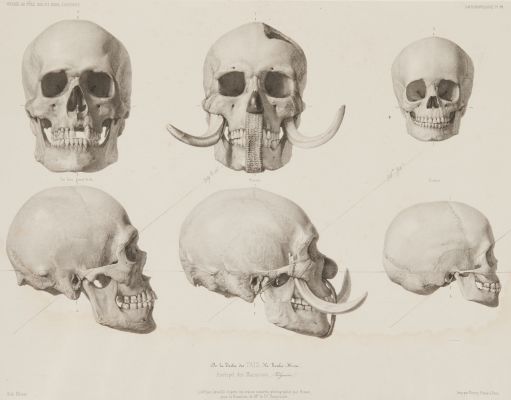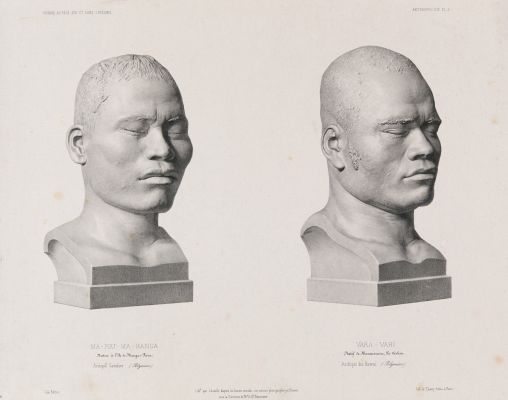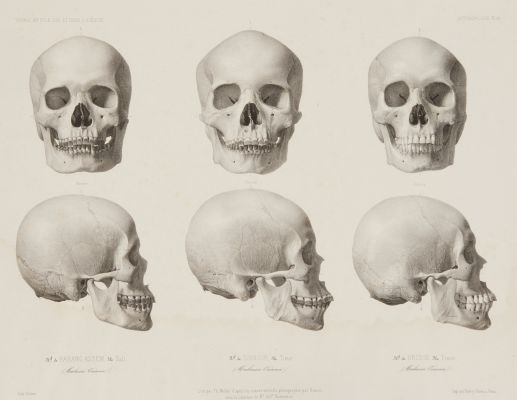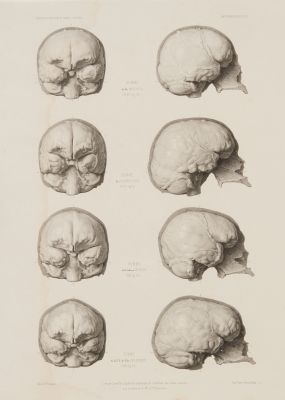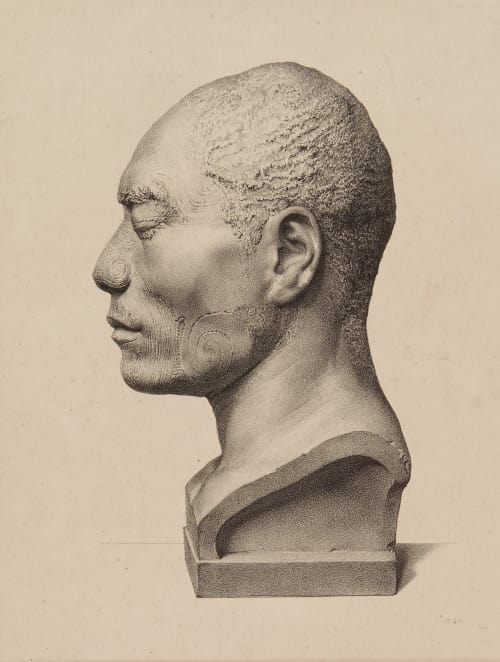
Title
Test lithograph from daguerreotypeArtist
Bisson, Louis-Auguste (French, 1814-1876)Publication
Voyage au Pole Sud et dans L'Océanie; Atlas AnthropologiqueDate
1841 plate (1841 negative)Process
Lithograph (from photograph)Atelier
LeveilléImage Size
18 x 14 cmSheet Size
35 x 26 cm
The dawning of photography happened in an age of Naturalism. No aspect of life—art, the pure sciences, anthropology, archaeology, exploration—was untouched. Along with the plaster cast, the daguerreotype was the ultimate tool for scholars, and adventurers in every field.
This rare lithograph test by Leveillé, a first in terms of use of photography in ethnology, was made from a daguerreotype by the Bisson brothers and is an early attempt to reproduce for publication the material collected during French explorer Jules Sébastien César Dumont d’Urville’s (1790-1842) 1837-1840 voyage through the Pacific and the Antarctic circle on board the ‘Astrolabe’ and the ‘Zélée’. Ultimately realized in the publication, Voyage au Pôle Sud et dans L’Océanie. The lithograph depicts a life cast of a Torres Strait Islander produced by Pierre-Marie Alexandre Dumoutier (1797-1871), an anatomist and phrenologist who traveled with the expedition. Dumoutier was commissioned by Dumont d’Urville to collect casts of the indigenous populations of each site visited over the course of the voyage. The life casts were used to substantiate Dumont d’Urville’s belief in a stratified racial hierarchy among the inhabitants of the South Pacific region.
A pseudo-science popular in the 19th Century, phrenology involves the study of the shape and measurements of the skull to predict and determine variations in human temperament. Predicated on the belief that the relative size of different areas in the brain dictated personality and character, phrenological research was often enlisted to support prejudicial racial profiling and endorse colonialist imperatives. In Dumoutier’s life casts, the figure becomes a specimen to be studied. As art historian Stacy Kamehiro notes, while Dumoutier was convinced that all humans shared a common origin and cerebral physiology, his work in the South Pacific was used as evidence to support the argument that each race displayed fundamentally different origins and characteristics. This position is articulated in the text written by the entomologist Émile Blanchard (1819-1900) that accompanied the published lithographs. As objects used to provide scientific veracity to the notion of primitivism, the life casts have become notorious as expressions of colonial objectification of indigenous humanity and of the complicity between science, and anthropology specifically, with imperial power. As art historian Bernard Smith suggests, the life casts fulfilled a desire for objective accuracy and scientific exactitude. Photography was seen to satisfy the same agenda. The invention of photography occurred after Dumont d’Urville had set off. Upon his return, he organized to have his research materials photographed. According to Joanna Kane, an artist whose work references early nineteenth century phrenological casts, ‘the life or death mask can be considered the sculptural analogue of the photographic portrait. Both suggest direct traces from life, involve positive and negative, and evoke a mysterious connection between living, breathing subject and captured image.’ 4 In the lithograph of the daguerreotype by Bisson of Dumoutier’s life casts, the ‘mysterious connection’ between the image and the subject is mediated by three separate (yet intertwined) processes. Here, the trace of life is filtered through the life cast, the daguerreotype and the lithograph.
References
Art Gallery of New South Wales https://www.artgallery.nsw.gov.au/collection/works/305.2013/. viewed Jan 31, 2023
Kamehiro, S. L. ‘Documents, specimens, portraits: Dumoutier’s Oceanic casts’. In ‘Fiona Pardington: the Pressure of Sunlight Falling’ (ed. K Baker & E Rankin) 102-112. Dunedin, New Zealand: Otago University Press. 2011 p 111
Thomas, N. ‘Moulage du temps perdu: a voyage and its relics’. In ‘Fiona Pardington: the Pressure of Sunlight Falling’ (ed. K Baker & E Rankin) 46-53. Dunedin, New Zealand: Otago University Press. 2011 p 51
Smith, B. ‘European Vision and the South Pacific’. Sydney: Harper & Row Publishers 1985 p 335
Kane, J. ‘The Somnambulists: Photographic Portraits from before Photography’. Stockport, England: Dewi Lewis Publishing with National Galleries of Scotland. 2008 p 5
Batchen, Geoffrey. Apparitions: The Photograph and Its Image., 2017
https://www.artgallery.nsw.gov.au/collection/works/305.2013/
Buerger, Janet E. French Daguerreotypes. Chicago: University of Chicago Press, 1989. Print. P. 25
http://gallicalabs.bnf.fr/ark:/12148/bpt6k97700f/f1.planchecontact
